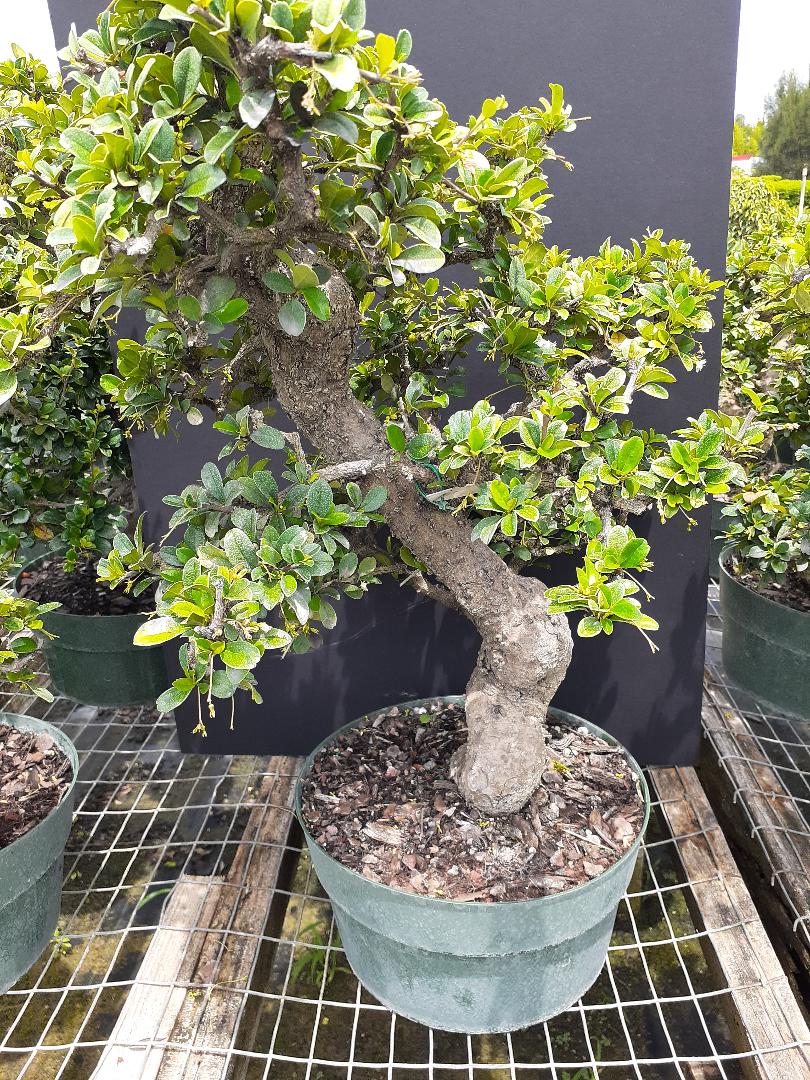TREE:FUKIEN TEA PREBONSAI
LOCATION: INDOORS OR WHEN TEMPS BETWEEN 40 AND ABOVE
LEVEL: BEGINNER
WATER: 2-3X A WEEK RATHER BE DRY THEN WET
SUN: SHADE TO SUNNY
HEIGHT: 16+ INCHES
The Fukien Tea Bonsai is a house plant that requires a little more attention to watering but the rewards are worth it. Your Fukien Tea Bonsai enjoys being pruned to help keep its beautiful shape and prevent overgrowth.
Start cultivating your personal garden today!
COMMON NAMES
- Fukien Tea Bonsai
Quick Fukien Tea Bonsai Stats
- Fukien Tea Bonsai grows best in consistent, bright, filtered light.
- Water your Bonsai when the top of the soil becomes dry.
- Springtime is the best time to trim your bonsai.
Light Requirements
Your Fukien Tea Bonsai will grow best with consistent, bright, filtered light. Many people put their bonsai trees near a window where the light is filtered through a pair of sheer curtains. This plant does not tolerate low light, the leaves may become sparse or fall off. If the plant gets enough light, it can produce cute little white flowers throughout the year.
Water Requirements
Water when the top of the soil becomes dry, then thoroughly drench until the water drains into the saucer. Empty the saucer if the water level is high so as not to drown the roots. Do not splash water on the leaves, this can cause stains. The worst thing you can do to your Fukien Tea Bonsai is to overwater it.
Humidity Preference
As a native to the tropics, your Fukien Tea Bonsai will appreciate you misting its leaves to increase humidity—especially when it gets very warm in the summer. Misting regularly also helps to keep the mites (damaging insects) from making themselves at home on the leaves.
Optimum Temperature
The Fukien Tea Bonsai enjoys average room temperatures of 65-78 degrees. Avoid temperatures below 55 degrees, sudden temperature drops, or cold drafts.
Plant Food
USE OUR ORGANICS FERTILIZER. ONLY APPLY EVERY 4 MONTHS
Bonsai requires occasional pruning to keep its beautiful shape, maintain health, and discourage it from outgrowing its container. Spring, after new growth emerges, is the best time to trim your bonsai. Prune by clipping and shaping their tops (leaves and branches) and clipping and removing some roots. Clip excess growth to keep the shape of the plant. Remove leaves or stems that detract from the balanced look of the plant and any dried or yellow leaves. Pruning the roots may be necessary as the plant matures. To do this, remove the plant from its pot and trim larger roots. Make sure to keep many smaller roots with lateral and hair roots. This will help keep the plant from becoming root-bound.



